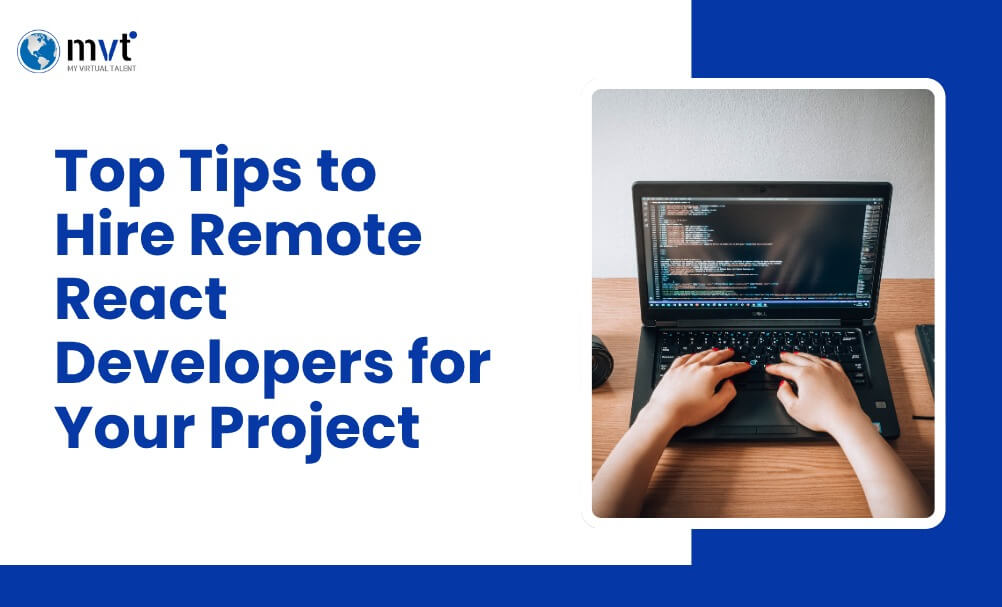
Remote work is no longer just a short-term trend; it’s here to stay. Studies show that over 42% of workers in the U.S. now work from home full-time, and this number is still growing. This big change proves one important point: having the right home office setup matters more than ever.
Working from your couch or kitchen table may have worked for a while, but it’s not a long-term solution. A proper home office setup helps you stay focused, feel more comfortable, and get more done. It also helps prevent health problems like back pain and eye strain, which can come from poor working conditions.
If you’re already working remotely or planning to start soon, now is the perfect time to improve your workspace. This guide will help you choose the right chair, desk, lighting, and tech tools. You’ll also learn how to create a space that keeps you motivated and organized, even on the busiest days.
A smart home office setup isn’t just about furniture; it’s about setting yourself up for long-term success.
Why Your Home Office Setup Matters
The way you set up your workspace has a big impact on how well you work. People with a good home office setup are shown to be 23% more productive than those working in uncomfortable spaces. It’s not just about comfort; it affects your body and mind too.
Sitting in a poor chair or using the wrong desk can cause back pain, which affects over half of remote workers. Many also suffer from eye strain due to screens being too close or too far. These problems make it harder to focus and enjoy work.
Your home office setup also influences your mood. A messy, dark space can make you feel stressed and tired. But a clean, well-lit space can help you think clearly and feel happier.
The best part? You get to design it your way. With the right home office setup, you can work better, feel better, and stay motivated every day.
Key Elements of a Home Office Setup
Workspace Location
Choosing the right spot for your home office setup is very important. Try to pick a quiet area, away from busy parts of your home like the kitchen or living room. If you can, use a room with a door so you can separate work from personal life.
Even if space is tight, you can get creative. A corner in your bedroom, dining room, or even a hallway can work with a small desk and smart furniture.
Make sure the spot has good natural light; it helps you feel awake and focused. Also, keep air flowing. A stuffy space can make you sleepy. Use a fan or open a window to stay fresh and alert during work.
Furniture Essentials
The furniture you choose makes a big difference in your home office setup. Your desk and chair should be comfortable and support your body well. A proper desk helps you sit at the right height and gives you space for your computer and papers. If your desk is too high or low, it can hurt your neck or arms.
Your chair is even more important. A good chair supports your back and keeps your feet flat on the floor. Look for one with soft padding and adjustable height. It’s worth spending a little more for comfort and to avoid back pain.
If your space is small, pick smart furniture like desks with storage or fold-down tables that save space when not in use.
Tech and Equipment
Having the right tools is important for a good home office setup. You need fast internet at least 25 Mbps, for smooth video calls and online work. If your office is far from the router, use a mesh Wi-Fi system for better connection.
A big screen helps your eyes and makes work easier. If you use a laptop, add a second monitor and place it at eye level. Using two screens can help if you need to look at different things at once.
Use a good keyboard, mouse, and headphones to stay comfortable and focused. A webcam and mic make your video calls look and sound better. Keep your wires neat with clips or organizers so your space looks clean and works well.
Proper Lighting
Good lighting is very important for a healthy home office setup. It helps you stay awake, protects your eyes, and makes your mood better while you work. Try to sit near a window so you get some natural light during the day. But don’t face the window directly; it can hurt your eyes or cause screen glare. Use light curtains if needed.
When it’s dark, a desk lamp is helpful. Choose one that lets you adjust the brightness and light color. Cool light is good for mornings, and warm light is better at night.
LED lamps are a great choice. They save energy, and some even come with USB ports or phone chargers. Avoid working in low light; it can give you headaches. Balanced lighting keeps your workspace calm and easy to use.
Organization and Storage
A clean space helps you think better. In your home office setup, staying organized means less stress and more focus. If you see too many things at once, it can distract you and lower your work quality. Use shelves, boxes, or drawers to keep papers, wires, and supplies in one place.
If you work with papers, get a file cabinet or a desk with drawers. If not, a small storage box may be enough. Wall shelves save space and keep things handy.
Keep your computer tidy too. Use Google Drive or Dropbox to store files and back them up. Tools like Trello or Asana help track tasks. Take 5 minutes each day to clean your desk. A fresh start each morning feels great!
Tips for Creating an Inviting Atmosphere
Your home office setup should feel warm and friendly, not cold or boring. Add things that make you smile or feel calm. Small plants are a great choice. They clean the air, add color, and make your space feel alive. Try easy plants like snake plants or pothos.
Hang photos or art that you like. It can be family pictures or something that inspires you. Just be careful with what shows behind you on video calls; keep it clean and simple.
Soft colors like blue or green help you feel relaxed and focused. A nice smell also helps. Use a candle or essential oil like lavender to feel calm, or peppermint to stay awake and alert during work.
Ergonomics and Health Tips
Good ergonomics help you stay comfortable and avoid pain while working. A smart home office setup keeps your body in the right position and your energy up.
Keep your screen at eye level to avoid neck strain. If you use a laptop, add a stand and a separate keyboard. Your keyboard and mouse should let your arms rest comfortably at your sides, with elbows bent like an “L”.
Sit in a chair that supports your back. Keep your feet flat on the floor and your knees level with your hips. Move often stand up, stretch, or walk every hour.
Try the 20-20-20 rule: every 20 minutes, look 20 feet away for 20 seconds. It helps relax your eyes.
Staying Productive in Your Home Office
To stay focused while working from home, you need a smart plan. A good home office setup helps, but your daily habits matter too.
Set clear work hours and stick to them. Let your family or roommates know when you’re working. Close the door or wear headphones so they know you’re busy.
Start your day with a routine like getting dressed, making tea, or checking your task list. These small habits tell your brain it’s time to work.
Avoid distractions. Turn off social media and non-work app alerts. Use website blockers if needed.
Stay organized with simple tools like a planner, notebook, or apps like Notion. This keeps your tasks clear and your goals on track.
Use a standing desk or a laptop stand to change positions. Standing sometimes helps you feel more awake and reduces body aches.
With the right habits and space, working from home becomes easier and more productive.
Budget-Friendly Home Office Setup Ideas
You don’t need to spend a lot to build a great home office setup. With smart choices, you can make a nice workspace even on a small budget.
Start with the most important thing, a good chair. Sitting for long hours can hurt your back, so it’s worth spending a little more on a comfy, supportive seat.
You can make a desk yourself using simple items like a wooden board and two legs. Use boxes or old shelves for storage. Paint old furniture to match your space and give it a fresh look.
Buy second-hand furniture from garage sales, online marketplaces, or discount stores. You’ll find quality items for a lower price.
Use natural light; it’s free and helps you feel more awake. Free apps like Google Calendar or Trello can help you stay organized.
Upgrade slowly. Buy what you need first, then add more as you go. This way, your home office setup grows with your budget.
Frequently Asked Questions
How much space do I need for a home office?
A functional home office can fit in as little as 6×8 feet, though 8×10 feet provides more comfort and storage options. The key is using vertical space efficiently and choosing appropriately scaled furniture for your available area.
What’s the ideal desk height for ergonomics?
Standard desk height is 28-30 inches, suitable for people 5’8″ to 5’10”. Shorter individuals may need 26-28 inches, while taller people might prefer 30-32 inches. Adjustable desks accommodate different users and allow standing work options.
Should I invest in expensive ergonomic furniture immediately?
Start with a quality chair, as it affects your daily comfort and long-term health most significantly. Other ergonomic accessories can be added gradually as budget allows. Many ergonomic principles can be achieved through proper positioning of existing furniture.
How can I reduce eye strain during long work sessions?
Position your monitor 20-26 inches from your eyes, with the top of the screen at or below eye level. Use the 20-20-20 rule, adjust screen brightness to match surrounding lighting, and ensure your workspace has adequate ambient lighting to reduce contrast.
What’s the best way to maintain work-life balance in a home office?
Establish clear physical and temporal boundaries. Designate specific work hours, create a dedicated workspace if possible, and develop routines that signal the beginning and end of your workday. Avoid working from areas associated with relaxation, like your bedroom or couch.
Conclusion
A good home office setup is more than just a place to work; it helps you stay focused, feel comfortable, and do your best every day. When your chair supports your back, your desk is tidy, and your space feels calm, it’s easier to enjoy your work and stay healthy.
You don’t need to spend a lot or change everything at once. Start small. Raise your screen, add a lamp, or clear off your desk. One small change can make a big difference.
Everyone’s home is different, so your setup should match your space, budget, and needs. Use this guide to help you create a space that works just right for you.
Not sure where to begin? MyVirtualTalent can help you design the perfect home office setup based on your goals and space. Book a free consultation with MyVirtualTalent today and get expert tips to build your ideal workspace!
Looking for fresh content?
Get articles and insights from our weekly newsletter.
Recent Posts
Reduce Your Marketing Spend By 70% And Grow Your Revenue Organically 10X Faster!
Get a Free Quote Today!










